Earth Shiners cover photo Jeju-do
Global Boiling
Written by: Rashawn Khamari Merchant
Coinciding with heat waves, both land and water are being impacted. Florida feels these impacts as the state’s coastal waters reached temperatures upwards of 100 degrees. This reach led scientists to reference the term ‘global boiling.’
In Florida, a region called Manatee Bay, just south of Miami and North of the Florida Keys, waterways reached 101 degrees Fahrenheit. An astounding reference point is that most hot tubs will range between 100-102 degrees.
As people seek comfort away from this summer’s heat, even the beach may not be safe to enjoy. This hazard is the case for marine animals as researchers look to project coral and manatee populations known to reside in these parts.
Along with warm air, there is a lack of winds that typically cool down the water. In addition, shallow waters with lots of grass content, like the Everglades, could influence the data. The official record for the warmest ocean temperature in Kuwait stands at 99.7 degrees Fahrenheit in 2020. Florida’s numbers will continue to be verified.
Sustainable Fishing
Haenyeo – The Women Divers of Jeju-do
Written by: Nina Haskins
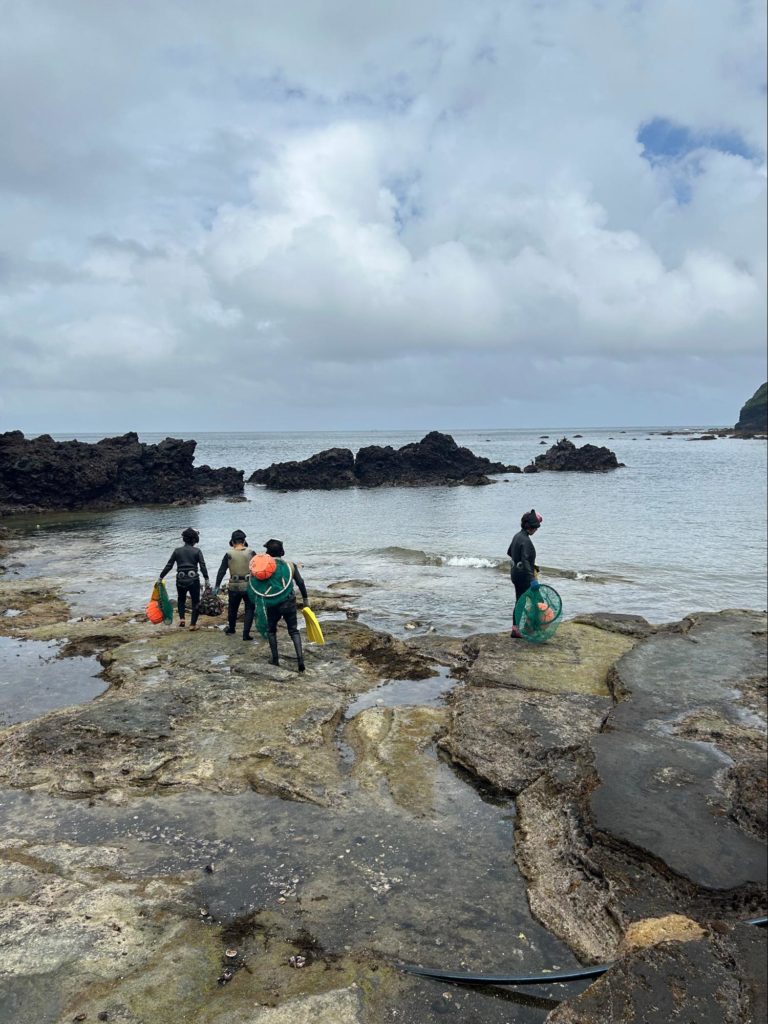
Nina Haskins/Earth Shiners
I was hiking down the side of a giant volcano, enjoying the lush greenery and smell of vegetation. I was amazed by the beauty and the view of the rest of Jeju, the volcanic island south of and belonging to South Korea. As my friends and I continued our descent, the side of the volcano became visible, revealing a cliff carved out by weathering and the ocean. Right below this massive rock are a dozen or so small orange dots. Upon closer inspection, we discovered that the orange dots were buoys; directly below, the Haenyeo (pronounced Hen-yo) was diving for abalone and sea urchins!
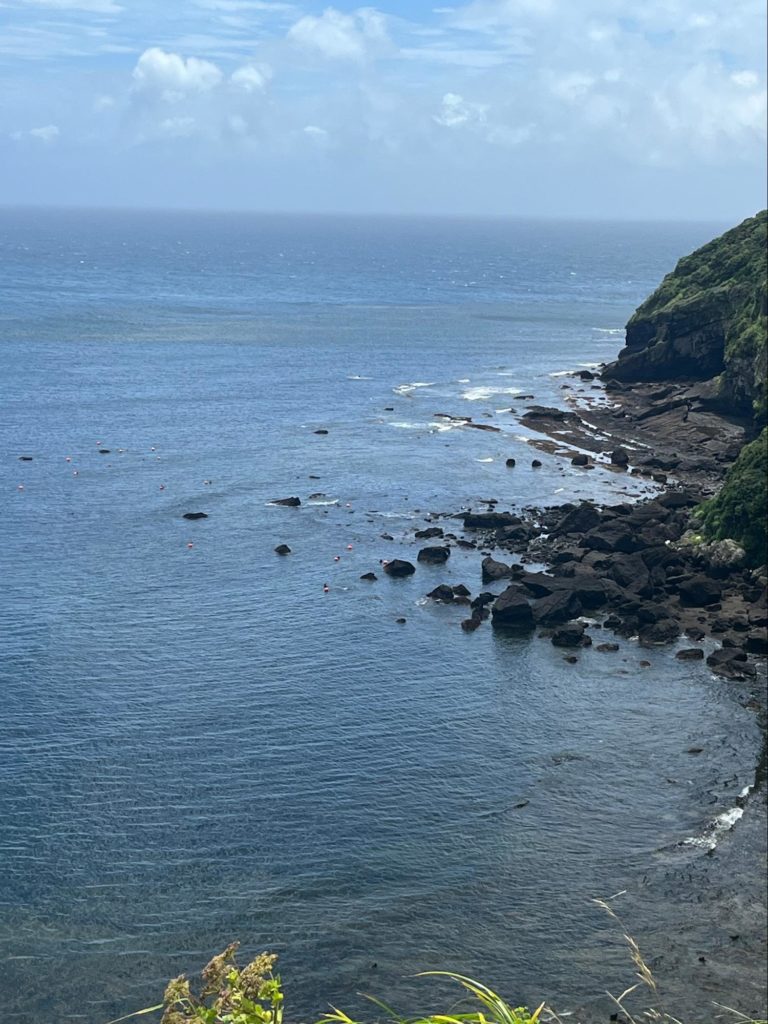
Nina Haskins/Earth Shiners
The divers dress minimally: they wear black full-body suits equipped with goggles, weights tied to their waists with a thick rubber band, and fuzzy socks under their flippers. They spend years training to dive for over 3 minutes, scraping the abalone and urchins off rocks and corals. They use their bright orange buoys to guide where they dive so as not to get too far away from the group.
Harvesting abalone (shelled sea creatures) and sea urchins is a trade the large fishing industry hasn’t threatened because nets, fortunately, miss the organisms and are instead hand-scraped off rocks and corals. It is sustainable harvesting because the divers can easily count and control the amount they collect. They never harvest in the same area for too long. Based on the waves and weather patterns, they will move along the coast near the cove and volcano to different harvesting sites.
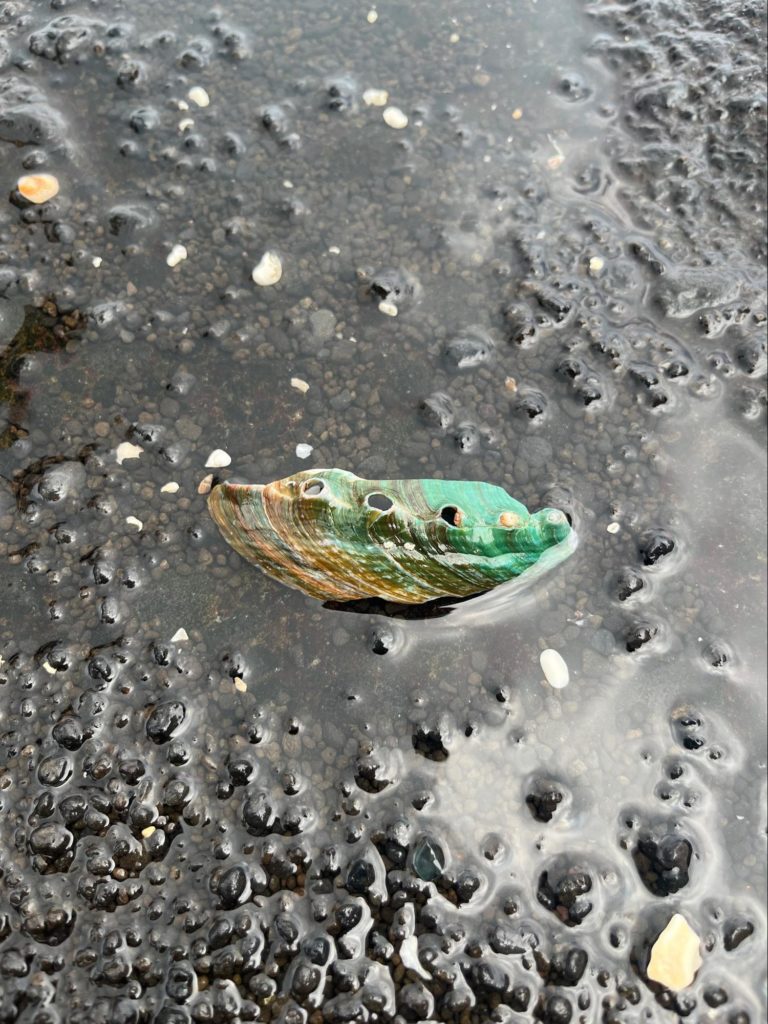
Nina Haskins/Earth Shiners
Their work is also beneficial for the ocean because an overpopulation of urchins can threaten the habitats of other marine life by eating through kelp forests on the ocean floor. Sea kelp also helps capture and store carbon dioxide, essential in our fight against global warming. Furthermore, to reinvest in their ocean and business, they return the abalone shells to the water so other microorganisms can reattach to their exteriors. This circularity supports regrowth in the sea.
Amazingly, this clan of sustainable harvesters averages ages of 50-60 and even older! At this age, they dive in groups for 5-hour shifts at a time. When they return to shore, most divers haul a massive net of urchins and abalone hundreds of stairs up the mountain for selling. A portion also goes to a humble restaurant on the beach to be eaten fresh.
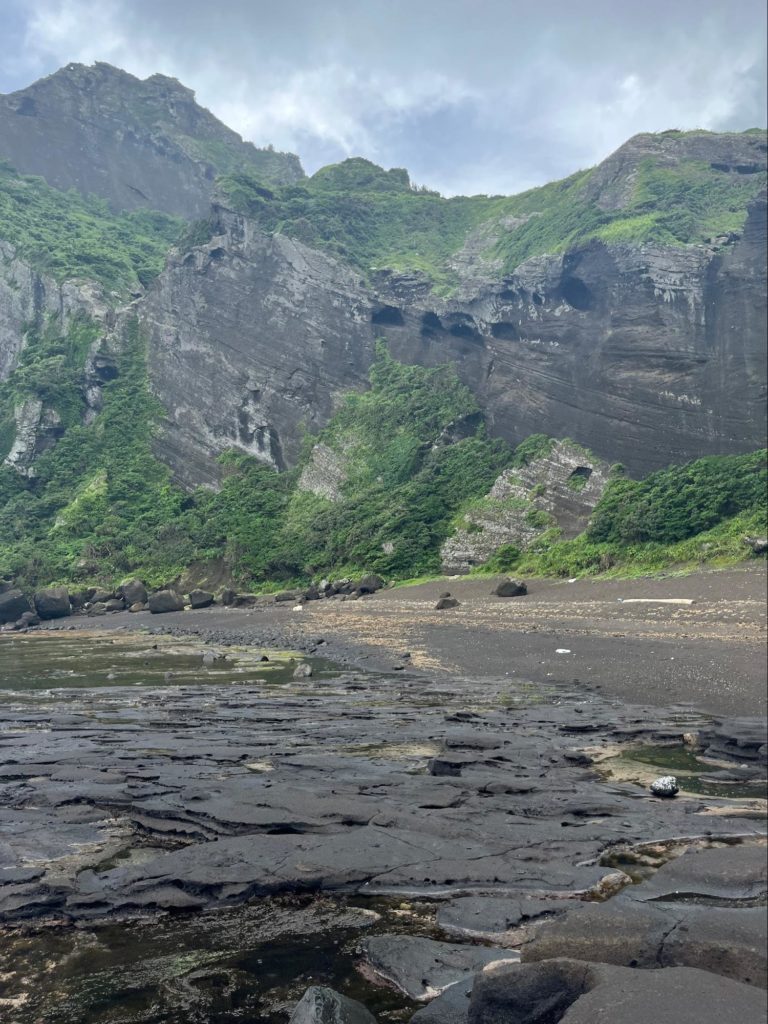
Nina Haskins/Earth Shiners
The Haenyeos of Jeju work sustainably in this bay, not knowing that they are deeply admired worldwide for their traditional and challenging work. What is a respected, humble tradition on the island of Jeju is another beautiful example of how indigenous practices set the best standards of how we can coexist with the environment while still enjoying our favorite traditional cuisines.
5 Benefits of Houseplants
Graphic by: Alejandro Pineda Catalan
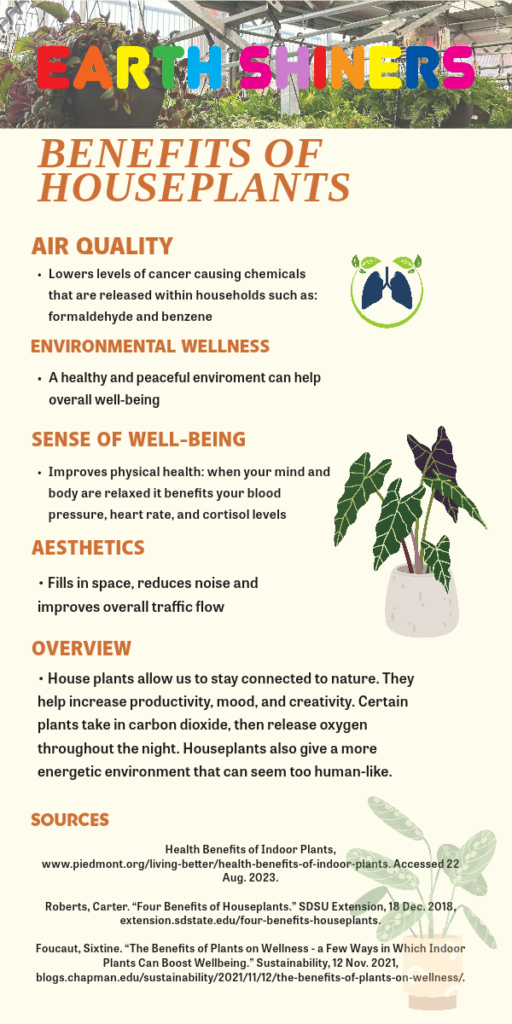
Earth Shiners
Brownfields 2023 Conference in Detroit
Written by: Rashawn Khamari Merchant
I had the opportunity to attend the Brownfields 2023 Conference in Detroit. The conference brought together industry professionals from all over the country(I even met a group from New Zealand) interested in repairing and developing brownfield spaces in their communities and regional areas.

Rashawn Merchant/Earth Shiners
Brownfields are land sites contaminated by abandoned manufacturing plants and factories. As we know, manufacturing is one of the most significant contributors to dumping and toxic waste leaks, causing harmful effects on the natural environment and nearby residents. Heavy metals and lead can become forever chemicals when not appropriately mitigated.
When speaking to conference director David R. Loyd, he clarified that Brownfields is the premier conference addressing brownfield development. He enthusiastically expressed his appreciation that Detroit is such a wonderful host city.

Rashawn Merchant/Earth Shiners
With this being my first visit to the Motor City, his gratitude became apparent. Detroit was once the car manufacturing capital of the world. As Henry Ford revolutionized the production of automobiles, he directly made Detroit one of America’s best cities to do business. By implementing the 8-hour workday, assembly lines, and high wages, people flocked to the city to live and work. Manufacturing capabilities grew alongside the city’s boom, and plants formed everywhere. There were buildings for each part of the car, including centers for shipping and transportation, as the Detroit River provided excellent access for travel and distribution of industrial parts.
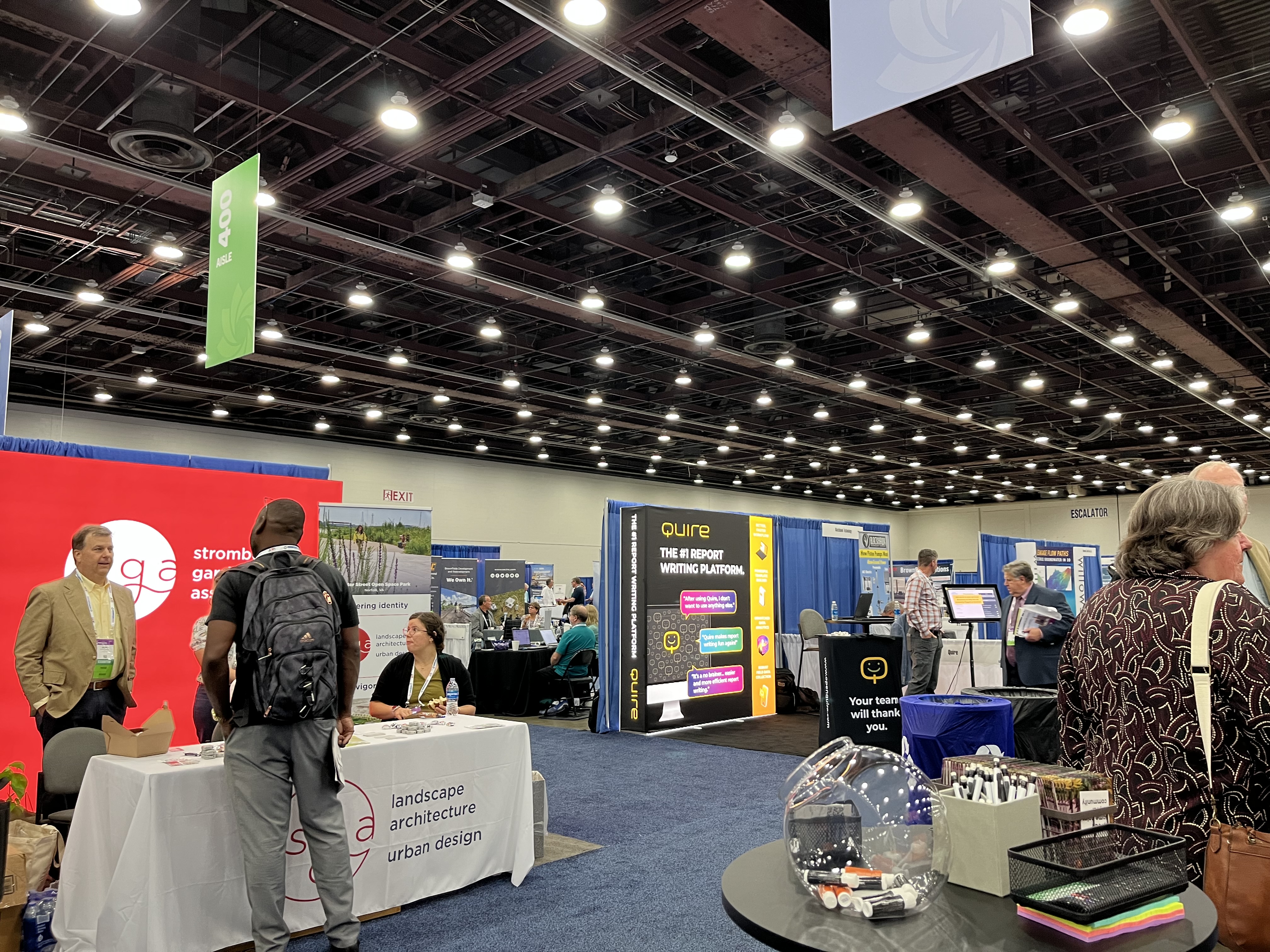
Rashawn Merchant/Earth Shiners
All these factors gave Detroit the ability to prosper. Unfortunately, there came a dramatic shift in the city’s business. Through labor outsourcing, much of the cities’ manufacturing moved to the south or overseas in favor of cheaper employment options and higher profits. This migration left Detroit in a devastating position. Factories became abandoned and left the economy in a downfall. As empty lots became common, much-unused land filled Detroit. As mentioned, this land was considered undesirable due to the renovations needed to make it safe.
I appreciated attending the conference because I interacted with thousands willing to put in the effort. Some companies invented soil and water testing equipment, and activists were there to promote environmental justice. Residents need activism as those nearest to brownfield sites are often of color and poorer. Marginalized people should benefit if a neighboring site turns into a park, community center, or shopping mall.
Brownfield development can be a great source of prosperity if done sustainably.
Air Travel Delays
Written by: Rashawn Khamari Merchant

Getty Images
All of us interested in air travel saw the story. A few weeks ago, a Delta flight scheduled to leave from Las Vegas to Atlanta never made it off the runway. Delays in flight traffic initially caused the plane to wait; however, the hold-up quickly became dangerous as passengers were held up for 3 hours on a sweltering tarmac. The plane’s air conditioning wasn’t fully functioning, and customers experienced heat-related illness while standing by. Some passengers fainted.
This event speaks volumes to the new reality of climate change and flying.
According to the U.S. Department of Transportation, airlines must provide comfortable cabin temperatures while passengers wait on the tarmac. Extreme heat makes it difficult for air travel to occur safely and efficiently.
Time has reported that airlines are shedding fuel and limiting passengers. High temperatures make the atmosphere less dense, which requires more energy to lift off. Airplanes will have to be lighter.
Delta Airlines released a statement affirming additional protocols to address the impact of heat on aircraft. Protocols will be needed, considering transportation workers will require breaks as baggage and ramp workers should also have protection from the sun.
Thanks for reading!
Copyright 2023 Earth Shiners Creative LLC
Earthshiners@earthshinersmagazine.com
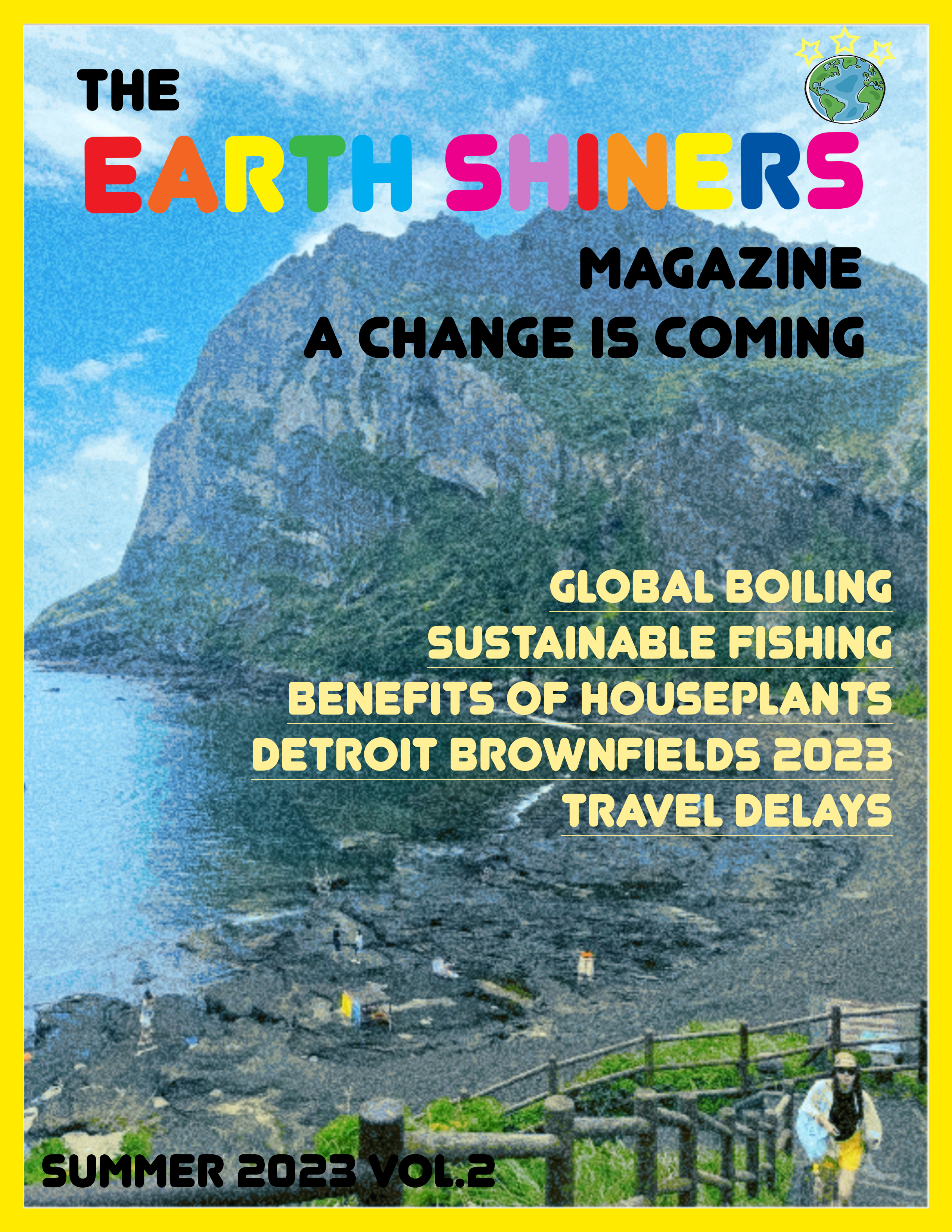
Leave a Reply